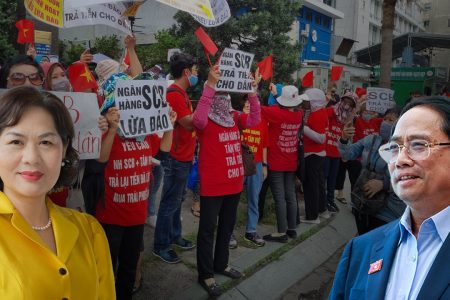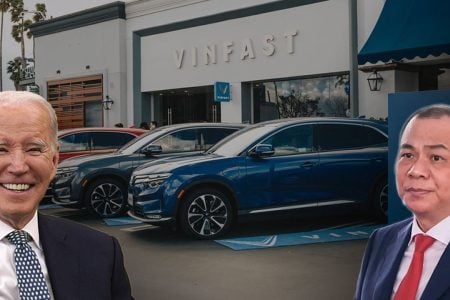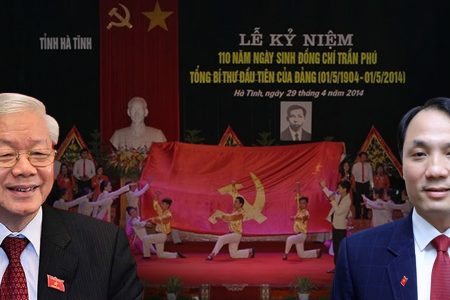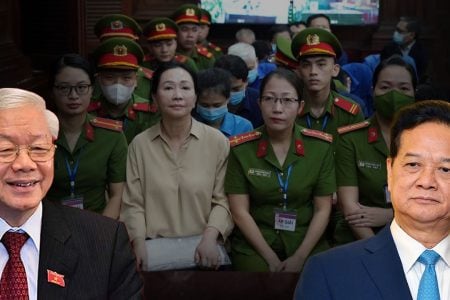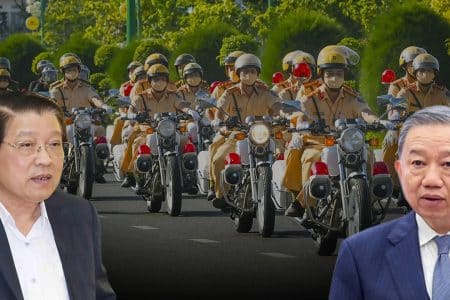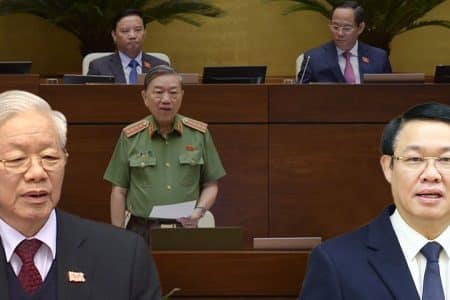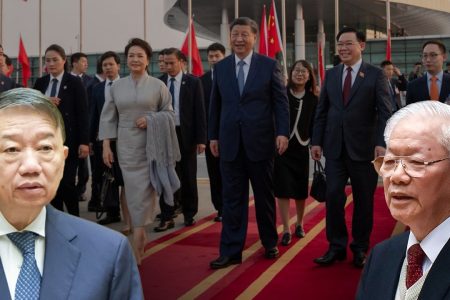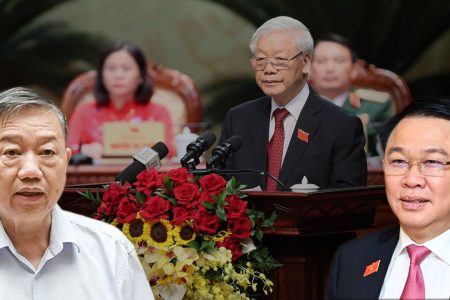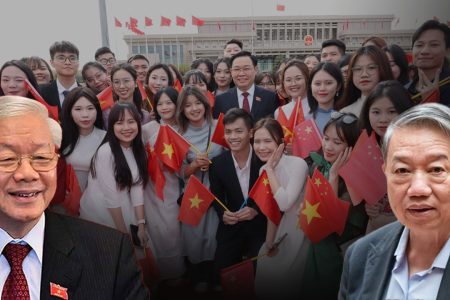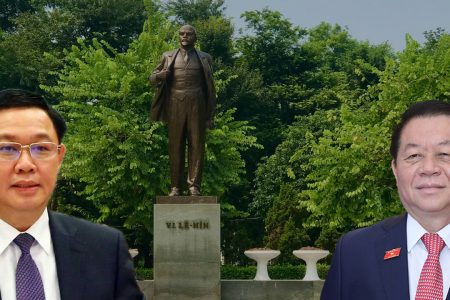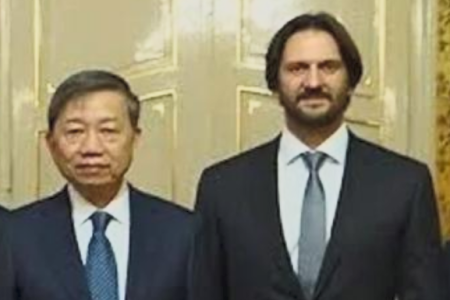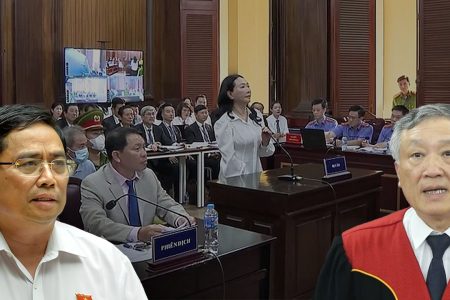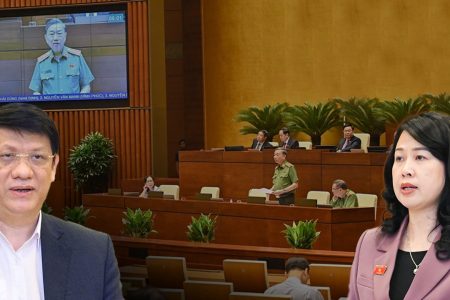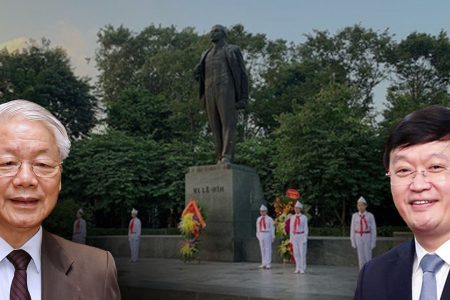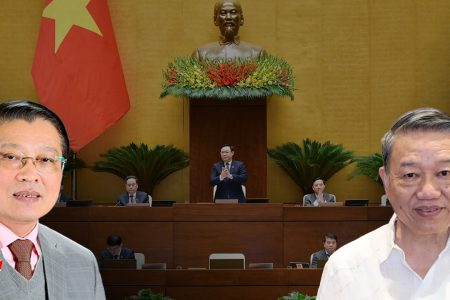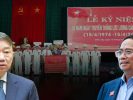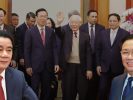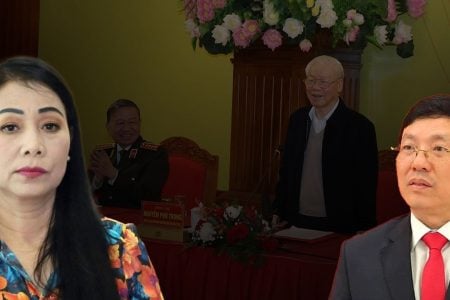The East Sea (South China Sea) has recently been stirred up by China’s provocative actions by during the Covid-19 pandemic, and there are rumors that Hanoi is considering a solution to allow the US to rent Cam Ranh naval base for a long-term which would help Washington to counteract Beijing’s recent aggression in the resource-rich sea which is also important for international trade.
Professor Carl Thayer of the Australian Defense Force Academy / University of New South Wales, an expert on Vietnam issues, analyzes policies of Vietnam and the US to see if complicated developments in the South China Sea are serious enough for the Vietnamese leadership to revise its defense policy and consider using a “trump card” to lease Cam Ranh port?
Cam Ranh is one of the best deep-water ports in the region, having strategic importance to Southeast Asia and the Asia-Pacific region.
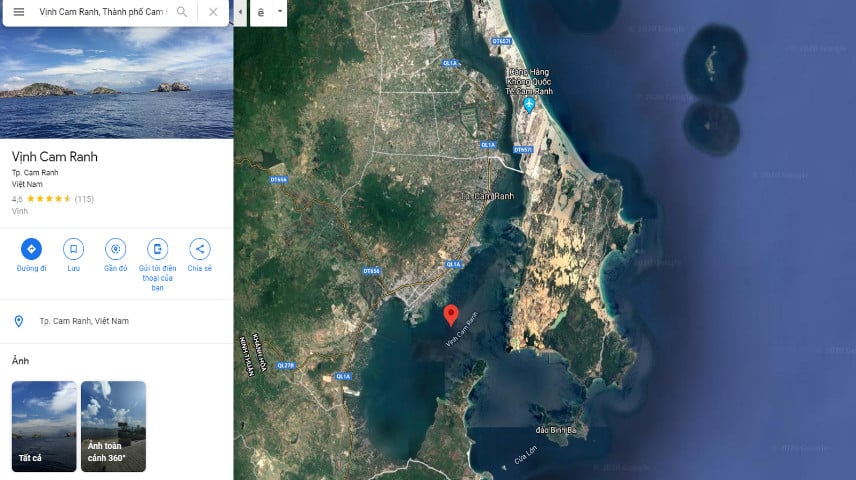
An article in the National Interest once said that Cam Ranh naval base could change the situation in the South China Sea, and Vietnam had a strategic card, which could decide which country among the great powers looking at Cam Ranh port for lease.
In an article published in The Diplomat on May 6, 2020, Professor Carl Thayer of the Australian Defense Force Academy asked whether the rumor was justified.
The joint defense treaty between the US and the Philippines has been in place since 1951, allowing US troops to be present at strategic Philippine bases.
The situation in the South China Sea would have been different if the Americans have had not pulled out of Philippine territory in the early 1990s because of conflicts leading to renegotiation of the Mutual Defense Treaty (MDT), which led the US to withdraw from the Philippines.
The absence of the US in the region has since created a space that allows China to expand its influence, eventually becoming a threat to smaller countries in the region.
Because of this threat, Manila proposed an agreement that would allow US troops “temporarily” to be present in the Philippines, leading to the Visiting Forces Agreement (VFA) with the US in 1998, and then the Enhanced Defense Cooperation Agreement (EDCA) between Manila and Washington in 2014.
However, the announcement of President of the Philippines Duterte to end the VFA with the US will impact on EDCA because it is unlikely that Americans will continue to operate and support the Philippines if their personnel are not being protected by the terms of the VFA agreement.
Concerns about bilateral relations and President Duterte’s inconsistent policy forced Americans to turn to neighboring countries, and in that context Vietnamese facilities became more attractive to the US, leading many rumors that Hanoi is considering long-term lease of Cam Ranh naval base or a few islands in the South China Sea to the US.
Professor Carlyle Thayer said that this possibility was limited by Vietnam’s “Three Nos” policy, which prohibites the leasing of Cam Ranh port or rocky islands in the South China Sea.
Foreign policy and defense of Vietnam based on the principle of Three Nos was recorded in Vietnam’s first National Defense White Paper in 1998. The principle of Three Nos includes: “No military alliance with any country, No country setting up military bases on the territory of Vietnam, and not ally with any country against another country.”
This policy has been reaffirmed many times by Hanoi. The latest Defense White Paper, published at the end of 2019, changes the Three-to-Four policy:
“Vietnam advocates not to join the military alliance; do not link with one country against another; not allow foreign countries to set up military bases or use Vietnamese territory to oppose other countries; do not use force or threaten to use force in international relations.”
Professor Thayer said that based on the principle of Three Nos, Vietnam’s defense policy prohibits the lease of Cam Ranh naval base or other islands in the South China Sea to the US or any other country.
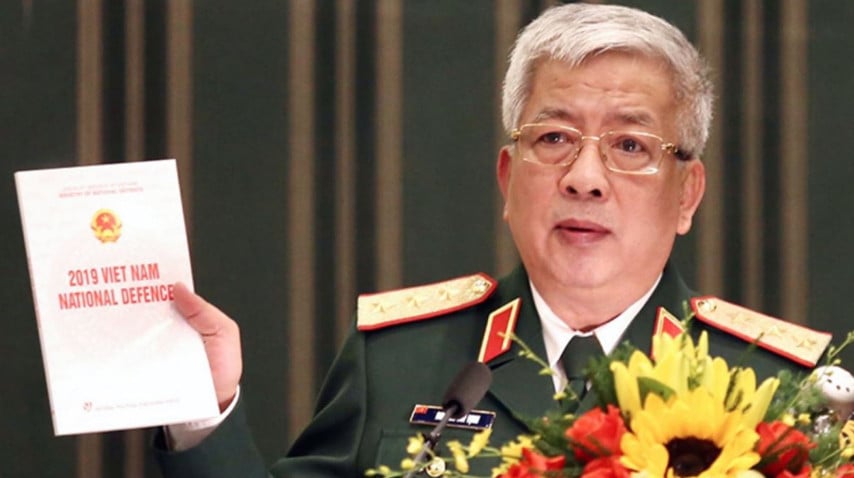
But Prof. Thayer noted that the 2019 White Paper Defense suggests a prospect for Vietnam to consider amending its Three Nos policy. The following paragraphs have attracted a lot of attention:
“Vietnam will strengthen defense cooperation with other countries to improve its ability to protect the country and address common security challenges.”
And,
“Depending on the course of the situation and under specific conditions, Vietnam will consider developing necessary defense and military relations with appropriate levels based on respect for independence, sovereignty, unity and territorial integrity of each other as well as the basic principles of international law, mutually beneficial cooperation, for the mutual benefit of the region and the international community.”
Vietnam occupies 49 to 51 outposts in the South China Sea, spread over 27 entities in the Spratly Islands, according to the Asian Maritime Transparency Initiative at the Center for Strategic and International Studies in Washington.

In 2009, then Prime Minister Nguyen Tan Dung announced that Vietnamese ship maintenance and repair businesses at Cam Ranh Port would be open to the world’s naval ships. The US was the first country to accept the invitation, bringing USNS Safeguard to Saigon port in September 2009.
In 2010, the US and Vietnam signed contracts for repairing and maintenance of US naval ships in Cam Ranh.
According to Thayer, from more than a decade now, the number of US warships docked in Vietnam for official visits, or for maintenance and repair is increasing.
Cam Ranh Port consists of a military port and a civil port. Cam Ranh International Port, the civil port, was officially put into operation in March 2016.
The first US Navy ship to return to Cam Ranh was the USNS Richard E. Byrd’s 7-ton ammunition refueling ship, calling at Vietnam in August 2011.
In 2016, up to 3 US warships made calls at Cam Ranh Civil Port: USS John McCain, USS Frank cable and USS Mustin.
The US has long advocated settling “reception points rather than establishing bases” based on the argument that the base has a fixed position, which is easy to be targeted, while the receiving point allows the US to continue access to those facilities at critical moments like a natural disaster or a crisis. So according to Thay Thayer, it is likely that the US will negotiate with the Vietnamese side to allow US warships to visit Vietnam regularly, rather than hiring a base to establish bases.
The has many military bases in the Pacific such as Yokosuka in Japan, Guam Island or like in Hawaii. And especially American warships capable of receiving supplies at sea.
Recently, as China became more aggressive and threatens Vietnam’s territorial sovereignty in the South China Sea, Vietnam and the US have had negotiations to improve the comprehensive partnership into strategic partnership.
However, according to Thayer, the Vietnamese government will be extremely cautious in applying any changes to its long-term foreign and defense policies during the lead up to the 13th Party Congress scheduled in the first quarter of 2021.
He said based on the past, Vietnam is more likely to continue its policy of “diversification and multilateralization” in relations with world powers. Therefore, it will be difficult for Vietnam to associate with the US to fight China.
Thayer said this explains why he came to the conclusion that “it is difficult for Vietnam to lease the port of Cam Ranh or an island in the South China Sea to the US.”
When asked what policy actions should Vietnam take to defend or ensure its legitimate and legitimate rights and interests in the South China Sea and the region today and in the future, Assoc. Hoang Ngoc Giao mentioned the three zero policy of Vietnam.
“Vietnam has Three Nos policy as an official one in the Vietnamese Government Defense White Paper, but if I ask if this policy is well received and approved by the people, I think no.”
“Because the people are so eager, it may not be an immediate alliance with the US and countries in the region such as Australia, Japan, or India, but at least it must strengthen effective cooperation on national security and defense.
But with the Thrre Nos policy, Vietnam’s Defense White Paper clearly caused disappointments for a lot of people in Vietnam.”
“The military cooperation is still very loose and fragmented, not suitable for the current hot situation, in which Vietnam’s territorial sovereignty over the sea and islands are threatened by China,” Giao said.
Vietnam is stuck as the ruling Communist Party of Vietnam and its ideology based on communism are dependent on China. At the same time, the regime wants to expand multilateral relations, especially with the US, the EU and other Democratic and Free countries in the world.
Chinese authorities have recently revealed the face of hegemony, as they continue to send a Note to the UN, claiming sovereignty over the Hoang Sa (Paracels) and the Truong Sa (Spratlys), demanding that Vietnam withdaw crews and equipment out of these seas.
With no other way left, the communist party must change and prepare a roadmap to soon convert to a democratic institution like civilized countries, returning the rights to the people of Vietnam.
Thoibao.de (Translated)




